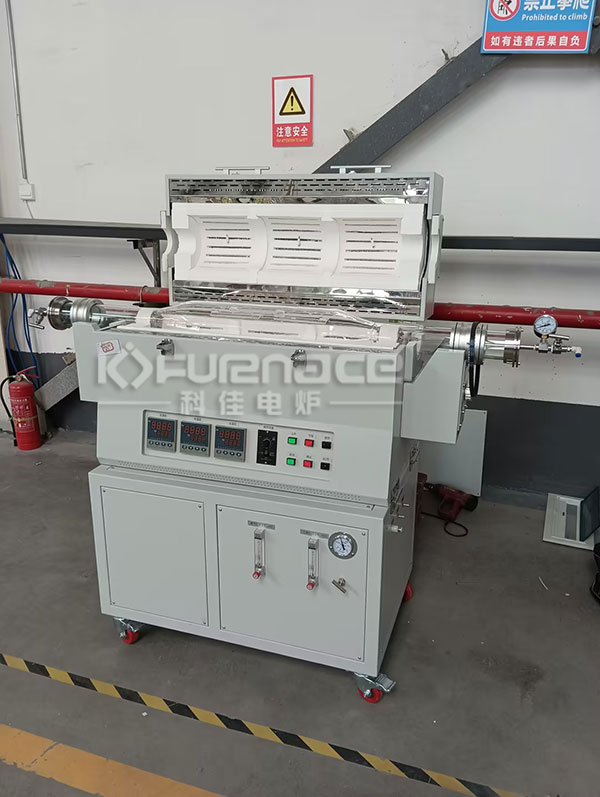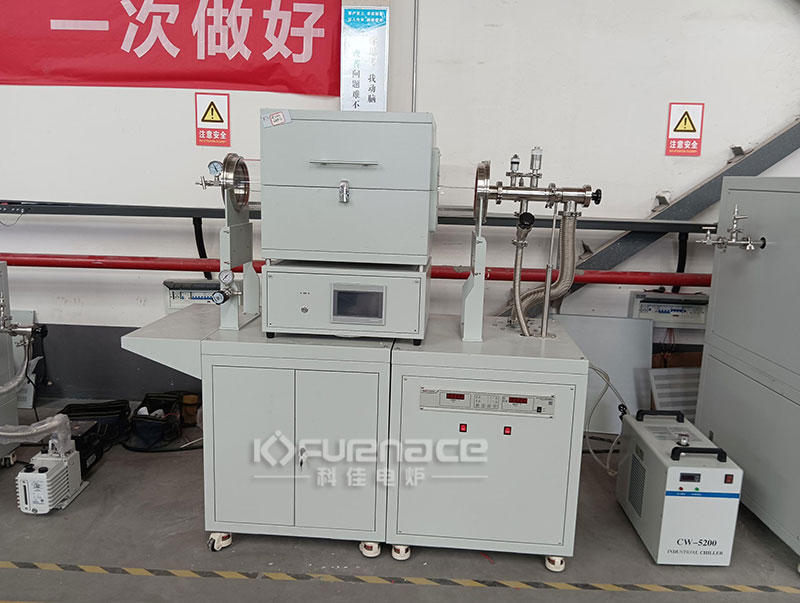There are various types of vacuum pumps that can be equipped in quartz tube furnaces, and the specific selection needs to be based on vacuum requirements, process conditions, and budget. Let’s take a detailed look below!

Customized vacuum rotary tube furnace (click on the image to view product details)
1. Low vacuum requirement (10 ⁻¹ Pa~10 ⁻² Pa)
Applicable scenarios: simple degassing, atmosphere replacement, non high precision experiments.
Recommended vacuum pump:
Mechanical pumps (rotary vane pumps, dry pumps)
Features: Low cost, simple operation, but oil vapor may contaminate the system.
Extraction speed: usually 2-10 L/s, suitable for small tube furnaces.
Applicability: For laboratory basic experiments, priority should be given to those with low requirements for vacuum degree.
Dry screw pump
Features: No oil pollution, suitable for processes such as semiconductors and lithium batteries that require high cleanliness.
Pumping speed: higher, but more expensive than mechanical pumps.
Applicability: Scenarios that require avoidance of oil contamination, such as metal powder sintering.
2. High vacuum demand (below 10 ⁻ ² Pa)
Applicable scenarios: semiconductor thin film deposition, nano material synthesis, high-purity material preparation.
Recommended vacuum pump combination:
Molecular pump+front-end mechanical pump
Features: The molecular pump achieves ultra-high vacuum (10 ⁻⁴ Pa level), while the front-end mechanical pump provides rough vacuum.
Pumping speed: The pumping speed of the molecular pump can reach several hundred L/s, and the pumping speed of the front-end pump needs to be matched.
Applicability: Processes that require ultra-high vacuum, such as silicon carbide and gallium nitride film deposition.
Oil diffusion pump+mechanical pump
Characteristics: Low cost, but requires regular maintenance, and oil vapor may contaminate the system.
Extraction speed: High, suitable for medium and large tube furnaces.
Applicability: Scenarios with limited budget but requiring high vacuum.
3. Special process requirements
Inert gas protection process
Requirement: After vacuuming, high-purity nitrogen or argon gas needs to be filled to prevent material oxidation.
Recommendation: Combination of mechanical pump and molecular pump, combined with gas mass flow meter (MFC) to control inflation.
Applicability: Metal sintering, semiconductor thin film deposition.
Continuous operation or high load scenarios
Requirement: 24-hour operation, requiring wear resistance and low failure rate.
Recommendation: Double stage rotary blade.
Applicability: Industrial assembly lines, large-scale production.
Low vibration and low noise scenarios
Requirement: Avoid vibration affecting sensitive samples (such as biological samples).
Recommendation: Oil free vortex pump.
Applicability: Laboratory precision experiments.

Vacuum tube furnace that can be used for annealing
4. Core principles of selection
Vacuum degree matching: The maximum vacuum of the pump needs to be higher than the process requirements (usually 1-2 orders of magnitude higher).
Extraction rate matching: Calculate the required extraction rate based on the volume of the tube furnace chamber and the target extraction time.
Medium compatibility: When extracting gas containing particles, choose a screw pump, and when extracting steam, use a steam water separator.
Cost and maintenance: A good brand requires high initial investment, but long-term operation and maintenance costs may be lower.
Scenario adaptation: Low vibration and low-noise pumps are preferred in laboratories, while wear-resistant pumps are selected for industrial lines.Click to learn more customized tube furnaces! Or click on online customer service to learn more about product information!